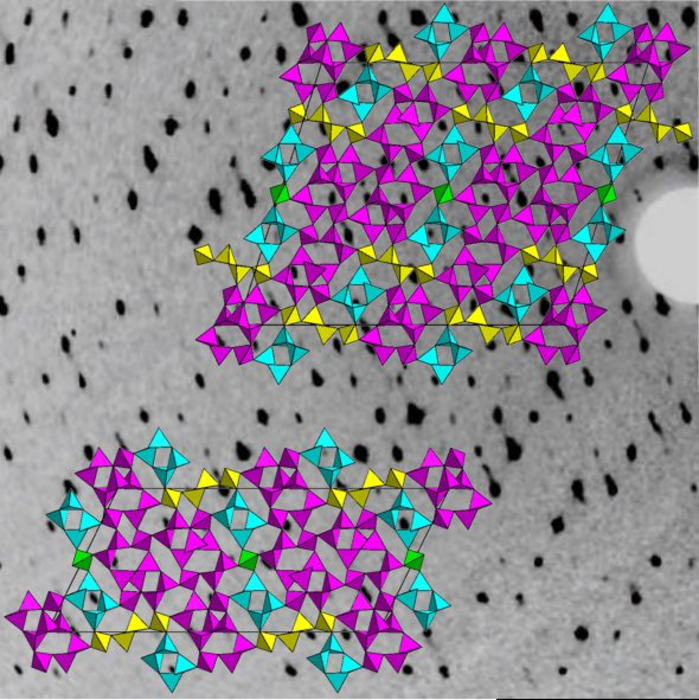When analysing crystal structure, the combination of electron microscopy and synchrotron radiation – particularly intense X-rays generated using a special technique at a large-scale research facility – plays a decisive role. However, the analysis of phosphorus oxide nitride shows that this is sometimes not enough. The substance, which could form the basis for novel phosphors in future studies, for example, was already produced for the first time in 2014, but its structure has not yet been elucidated, because it was previously considered a class of compounds that was difficult to access. Daniel Günther, a doctoral researcher in Oeckler’s working group, has now been able to solve the puzzle together with his mentor. “It was not due to the data, but to a trick of nature. We are not talking about just one substance, but three very complicated, intergrown compounds,” explains Günther, who is the first author of the study.

Credit: Institute of Mineralogy, Crystallography and Materials Science, Leipzig University
When analysing crystal structure, the combination of electron microscopy and synchrotron radiation – particularly intense X-rays generated using a special technique at a large-scale research facility – plays a decisive role. However, the analysis of phosphorus oxide nitride shows that this is sometimes not enough. The substance, which could form the basis for novel phosphors in future studies, for example, was already produced for the first time in 2014, but its structure has not yet been elucidated, because it was previously considered a class of compounds that was difficult to access. Daniel Günther, a doctoral researcher in Oeckler’s working group, has now been able to solve the puzzle together with his mentor. “It was not due to the data, but to a trick of nature. We are not talking about just one substance, but three very complicated, intergrown compounds,” explains Günther, who is the first author of the study.
Sections of the atomic arrangements formed a kind of modular system from which complicated and also disordered structures can emerge. “Such an investigation requires extremely meticulous work, for which only a few staff members can muster the necessary patience and concentration. Without a research sabbatical and such a dedicated member of staff, it probably wouldn’t have worked. Most people would have been horrified by what at first glance appeared to be ‘unanalysable’ data and would never have mentioned it again,” says Oeckler. He points out that the significant factor here is not only the structure of oxonitridophosphates, which the researchers find very interesting, but also the method of analysis. The procedure described in their article could be used to solve similar analytical problems with completely different substances.
Journal
Chemistry – A European Journal
DOI
10.1002/chem.202203892
Method of Research
Imaging analysis
Subject of Research
Lab-produced tissue samples
Article Title
Modular Principle for Complex Disordered Tetrahedral Frameworks in Quenched High-pressure Phases of Phosphorus Oxide Nitrides
Article Publication Date
31-Jan-2023




